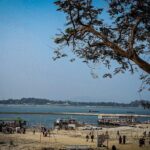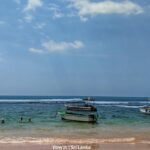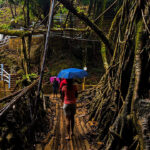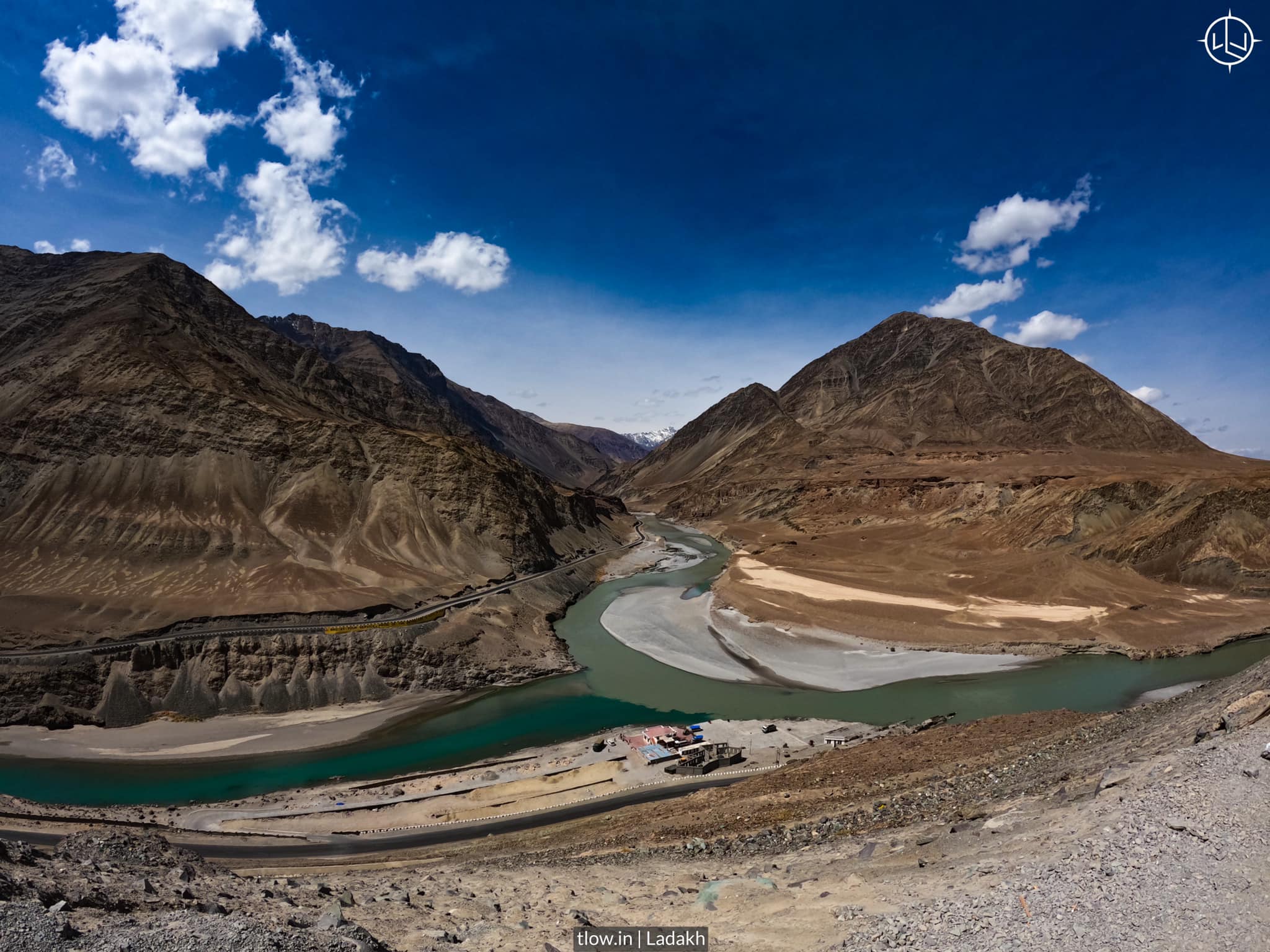
Confluence of awesome Indus-Zanskar: Where 2 mighty rivers meet
The confluence of the rivers Indus and Zanskar in Leh-Ladakh is roughly around 35 to 40 km away from the town of Leh along the late Srinagar highway which is Nh1. The two rivers, Indus and Zanskar meet each other very close to the village of Nimmu which is also the ending point for the river rafting that happens on the Zanskar.
The Indus-Zanskar confluence is a unique natural phenomenon located in the Ladakh region of northern India. It is the point where the Indus River, one of the longest rivers in Asia, meets the Zanskar River.
Table of Contents
Crowd at confluence
The confluence is usually a very crowded place since it’s a part of the Leh local sightseeing. So expect it to be crowded, if you don’t leave on time, there are two viewpoints to actually see the confluence. The first is while driving along the road which is a top, birds eye view point where you see the brown colour Zanskar River and Indus river which is green in colour meeting each other.
The Indus River, also known as the Sindhu River, originates in the Tibetan plateau and flows through India and Pakistan before eventually emptying into the Arabian Sea. It is a major river in the region and holds great significance in both historical and cultural contexts.
To avoid getting a lot of tourist crowd, the best time to leave from your hotel or guest house early in the morning around 8:30. You can have breakfast along the way and then stop at the confluence of the two rivers which is a good place to find peace and solitude if you reach on time. After 10:30 the place is crowded with a lot of tourists.
The Zanskar River, on the other hand, is a tributary of the Indus River and flows through the Zanskar Valley in the Indian state of Jammu and Kashmir. It originates from glaciers in the Himalayas and carves its way through rugged mountain terrain, creating a stunning landscape.
Two
A very important thing to note while talking about the confluence in Ladakh is that the rivers look the same that is green and dark green that’s two shades of green in the month of April-May by the first week of June, the Zanskar River turns brown in colour while the Indus is green till mid-June after which it turns brown.
The confluence of these two rivers is a sight to behold. The Indus River, with its relatively calm and clear waters, merges with the fast-flowing and icy Zanskar River, resulting in a stark contrast of colors and characteristics. The confluence is known for its unique blend of deep blue and greenish hues, creating a mesmerizing visual spectacle.
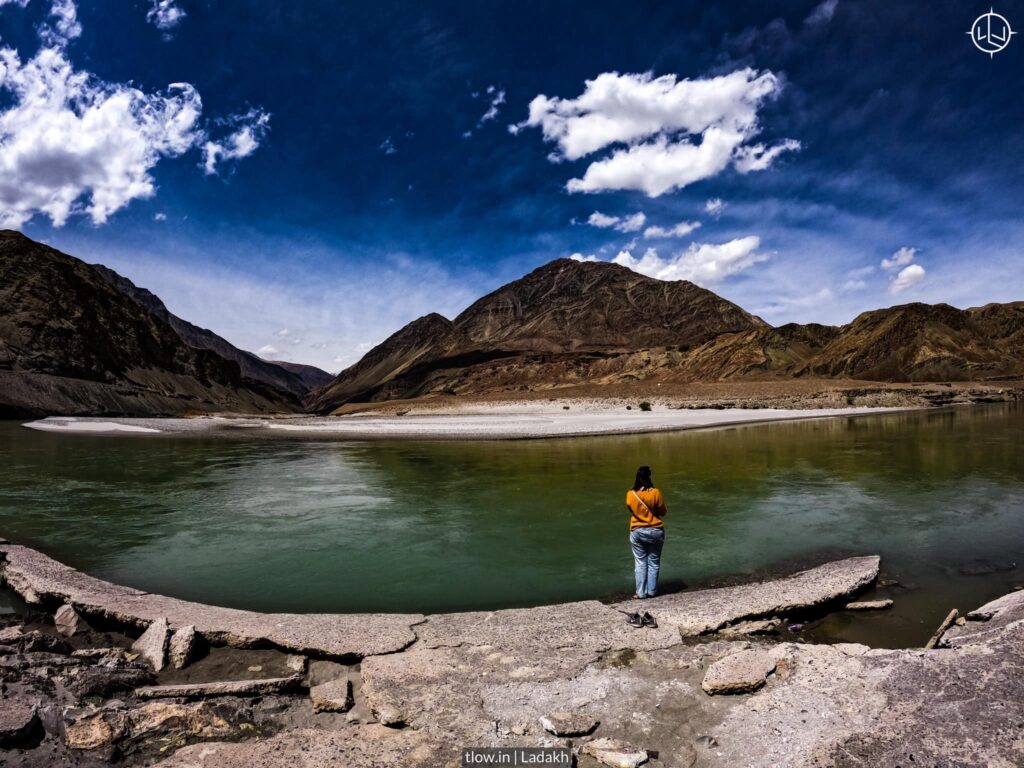
Because of the monsoon that brings along the mud, so after a point if you are someone who’s visiting Ladakh in the month of July, August or September be prepared to see the confluence which is just two rivers both brown in colour flowing one into another.
The Indus-Zanskar confluence is not only a natural marvel but also holds cultural significance. It is surrounded by numerous Buddhist monasteries and stupas, adding a spiritual touch to the already awe-inspiring setting.
If you are someone who likes living on the wild side and wants to take a dip in the river, the Indus or the Zanskar then be prepared to have your brain frozen. Since the water is extremely extremely cold and what you touch at surface level is not actually how cold it is beneath.
The confluence also serves as a gateway for adventure enthusiasts, as it marks the starting point for the popular Zanskar River expedition. This rafting and trekking expedition attracts adventurers from around the world, who embark on a thrilling journey through the majestic Zanskar Valley.
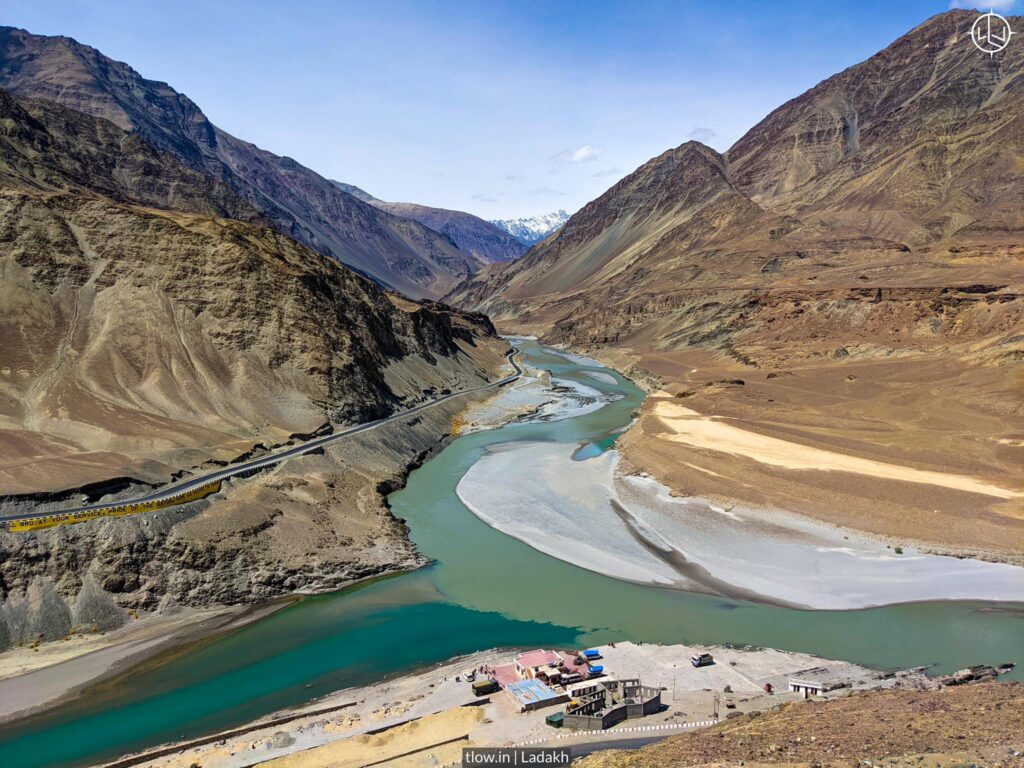
So if you get in, make sure that you have all possible gear ready when you come out. A towel and everything else needed to keep yourself dry because it’s going to be bone freezing cold.
Ideal
The most ideal thing to do while you are at the river bank is to actually just sit along the rocks and watch the rivers flowing and look at the mighty mountains. As getting in isn’t advisable so find some peace and just chill by the river bank. The minute you feel the sun’s getting too hot or the noise is getting too much or if your driver calls saying that there is a lot of traffic in the parking zone, then it’s time to leave.
Overall, the Indus-Zanskar confluence is a place where nature’s forces collude, leaving visitors in awe of its sheer beauty and grandeur.

